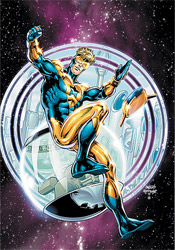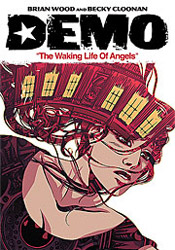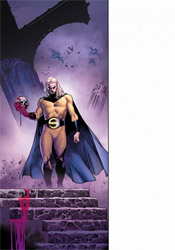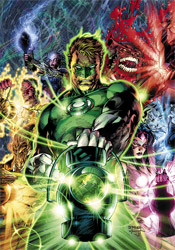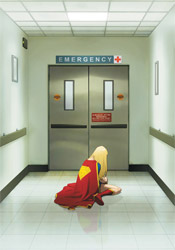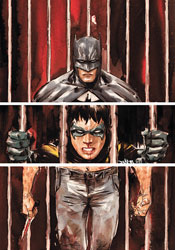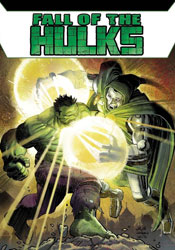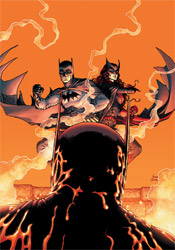
Given that this is a Grant Morrison-written series, that last statement is no certainty, with Batman and Robin #8 proving to be a perfect case in point. The front cover teases a Batman vs. Batman throw-down, with Bruce reanimated by a Lazarus Pit and Dick spoiling for the fight of his life, and with a few caveats the interior delivers. Thing is, that's not Bruce. Not exactly, anyway, but it also isn't a doppelganger.
This is a tricky plot, with a lot of close calls and moments of pause, but at the end of the day Morrison's narrative is able to pull off some tricky stunts while avoiding any major calamities. His explanation for the misleading premise actually makes a fair amount of sense, and at the same time answers a few nagging questions left over from several of the Bat's previous activities. Doting followers of the extended Wayne family will enjoy a few "Aha!" moments, while those with an expectation for self-contained yarns will more than likely see the issue's explanations as something of a cop-out. In many ways, your enjoyment of B&R #8 will depend entirely on the breadth of knowledge you carry into it.
Of course, Morrison has his problems. In particular, I've had enough of the cutesy-speaking, theme-garbed villains that have hung around this series since its start. This month's dialog, however fleeting it may actually be, is also a shortfall. The writer is so dedicated to reminding his audience that the issue takes place in England that several of its supporting characters sound like walking, talking stereotypes.
I'm not entirely sure what to make of Cameron Stewart's artwork. He's clearly the best compliment Morrison has enjoyed since Frank Quitely left the series, which I realize isn't saying much since I didn't care at all for Philip Tan's work, but he has a few hang-ups that I've struggled to move past. His very bold, composition-centered illustrations hug the fine line between stylization and oversimplification. Everything and everyone feels extremely thick and round, with the approach working better in some situations than in others. Stewart's work in the Batman vs. Batman fight scene is panicked, crazy and chaotic, which is both a positive and a negative. I'm sure the confusion was probably what Morrison was shooting for, with readers left uncertain about which brawler was the good guy, but it also slows the action way down in what should've been a very fast-paced, competitive fight.
After taking a moment's pause in the preceding arc, Batman and Robin appears to be back on the right track with its latest turn. While this issue is much more straightforward and less eccentric than the title's first few issues, the actual storytelling has more gravity and depth to it. Cameron Stewart won't benefit from any comparisons to Frank Quitely, but he's enough to get the job done and even turns in a few panels that had me wondering if he might some day begin to rival his better-known predecessor. There's some hope for this series yet. Borrow it.
Overall Score: 6.5
